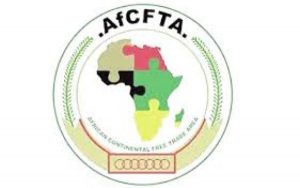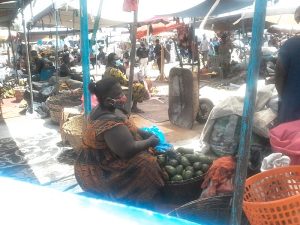The Ghana Commodity Exchange, which serves as a link between agricultural and commodity producers and buyers, says the listing of Ghana Rice on the Exchange is set for October this year.
Already, the Exchange has listed maize, sorghum, soy bean, and sesame for trading. The addition of local rice would go a long way to ease the burden on rice farmers who often struggle with access to ready market.
The economic impact of the COVID-19 pandemic is beginning to re-awaken developing countries in particular, of the need to look more inward for solutions rather than being dependent on other countries.
Ghana for instance spends over 300 million dollars annually to import rice, a situation that has stifled the growth of local rice production. Local rice farmers have consistently complained about lack of support by way of inputs, cheaper credit and ready market.
The Ghana Commodities Exchange provides an avenue for producers and buyers to be able to trade in a structured manner.
This intervention means that rice farmers and millers can be sure of ready market with competitive prices once they meet the expected quality standard.
In an interview with Citi Business News, Chief Operations Officer for the Exchange, Robert Dowuona Owoo, said with the certification of some warehouses still pending, trading of rice should commence soon.
“When a contract is approved, we can’t just go and have a ceremony and say it’s listed and then we start. First of all, the warehouses must also be licensed by the regulator. Licensing means that, they need to go and check the warehouse, make sure its fit for storing that particular commodity as we’ve indicated. We need to make sure that we have our fire certificate, we need to make sure that we’ve had insurance cover for the structure, and also the content that will be in there. They need to make sure that the staff that we have there have been properly trained and certified by the Standards Authority to do that work,” he said.
“This coming Monday (7th September, 2020), the food bank is going to be launched and we’re hoping that by the end of the month, we would have had the license to trade from that particular warehouse. So, I’m very confident that in the first week of October, we should have milled rice fully listed on the Exchange, but not listed as in just being there but then trading would actually commence,” he added.
The Exchange also says the rice from local farmers will be subjected to intense test and parameter checks to ensure that they meet the requirements of buyers.
“During the value chain analysis, what we realized from most of the buyers were that the quality that they require from the millers are sometimes not what they get and so they are forced, most of the time, to look at the imported grain that come in. The GCX is a structured market and has standards and rules to follow and so, any rice that comes out of the GCX, if it’s a Grade 1, it has certain parameters it has to meet. So, any milled rice that does not meet those parameters, will not be able to trade on the Exchange. And so, they are excited, provided we can give them the quality that they want,” he said.
Source: Citibusinessnews.com







